Sorted by date Results 1 - 21 of 21
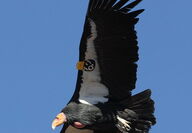
Watch California Condors Take Their First Flights In The Wild This will happen during the 27th annual public condor release - in-person and live-streamed! VERMILION CLIFFS, Ariz. - The Peregrine Fund and Bureau of Land Management at Vermilion Cliffs National Monument are hosting a celebration on National Public Lands Day, Saturday, September 24 by releasing captive-bred California Condors at 1 p.m. MDT (noon MST, northern-Arizona Condor Time) to take their first flights in the wild. The event... Full story
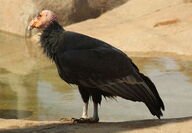
The Arizona-Utah California Condor conservation effort is a partnership of federal, state and private entities, including The Peregrine Fund, Bureau of Land Management in Utah, Bureau of Land Management's Vermilion Cliffs National Monument, Arizona Game and Fish Department, U.S. Fish and Wildlife Service, Grand Canyon and Zion national parks, Utah Division of Wildlife Resources, and Kaibab and Dixie national forests, among other supporting groups and individuals. This is the 26th year that the... Full story

Hunters asked to continue voluntary lead-reduction efforts this fall. Arizona hunters have proven their long-held commitment to wildlife conservation by voluntarily working to reduce the amount of lead exposure to endangered California condors, and the Arizona Game and Fish Department (AZGFD) is encouraging all hunters to join the effort this fall. Hunters drawn for hunts in Game Management Units 12 and 13 (north Kaibab National Forest and Arizona Strip) are eligible to participate in the depart... Full story

Record number of boat decontaminations in Arizona helps fight spread of aquatic invasives in Western states. The Arizona Game and Fish Department (AZGFD) continues to help prevent the spread of aquatic invasive species (AIS), and it seems the ramifications are being felt throughout some Western U.S. states. During the 2018-19 fiscal year, AZGFD decontaminated a record 237 boats -- up from 159 the previous fiscal year. This increase in decontaminations also has helped some Western states, namely... Full story
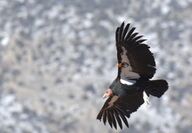
The public is invited to the release of the endangered California Condors. This will take place on Saturday, Sept. 22 at Vermilion Cliffs National Monument. There is nothing quite as iconic in the western United States as a California Condor soaring over the red-rock-canyon landscapes of northern Arizona and southern Utah. Thanks to people working together to recover this species, condors have become a fixture in southwestern skies. On National Public Lands Day On National Public Lands Day this... Full story

The North American Non-Lead Partnership (NANLP) — formed late last year by the Oregon Zoo, The Peregrine Fund and the Institute for Wildlife Studies — seeks to expand the coalition of hunters, anglers and other conservationists dedicated to improving ecosystem and wildlife health by choosing non-lead options. Three state wildlife agencies — the Arizona Game and Fish Department, Utah Division of Wildlife Resources, and Oregon Department of Fish and Wildlife — have recently joined the partner... Full story

A total of 437 student archers representing 30 schools from throughout Arizona, participants on the state level of the National Archery in the Schools Program (NASP), recently competed in the 2018 state tournament and 3D shoot at the Ben Avery Shooting Facility in Phoenix. AZGFD Coordinates NASP The Arizona Game and Fish Department coordinates NASP on the state level and hosts a half-dozen state qualifying tournaments throughout the academic year, beginning in September and ending in March.... Full story
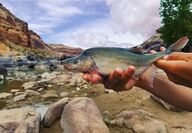
Through collaborative conservation efforts, the once-dwindling endangered humpback chub has been given a fighting chance against the currents of extinction, building a wild population large enough to soon be reclassified as a threatened species by the U.S. Fish and Wildlife Service. The success was due to the efforts and commitment of multiple agencies, including the Arizona Game and Fish Department (AZGFD); Colorado Fish, Wildlife and Parks; Utah Division of Wildlife Resources; U.S. Fish and... Full story
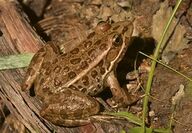
A frog species in Arizona and southern Nevada does not need federal protection under the Endangered Species Act, thanks to the multi-partner conservation efforts of the Arizona Game and Fish Department, U.S. Fish and Wildlife Service, and other federal and state agencies that make up the Relict Leopard Frog Conservation Team. The Fish and Wildlife Service has determined that relict leopard frog populations are stable or increasing. The Service was petitioned in 2002 by the Center for Biological... Full story
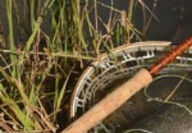
Tip Alamo Lake can be a crappie hot spot this time of the year. Heavy rains might delay the great winter crappie bite, but it bodes well for the lake's productivity. Catfishing can still be excellent. These voracious channel catfish at Alamo routinely feed on shad. Try live minnows on the bottom or drop-shot style just off the bottom. The Reel Deal Water temperatures across the state have dropped to their winter standards, and rain and snow has slowed or stalled driving in the high country. Be... Full story

California condor conservation achieved a milestone last hunt season with a record number of big game hunters in the species' core range voluntarily using non-lead ammunition or removing lead-infected gut piles from the field to prevent condors from feeding on them. In Arizona, a total of 91 percent of the big game hunters voluntarily used non-lead ammunition or removed gut piles from the field. In Utah, 84 percent of big game hunters in the core range did the same. New Groups Encouraged Now,... Full story

California condors will be released to the wild in the Vermilion Cliffs National Monument in northern Arizona at 11 a.m. Saturday, Sept. 27. The public is invited to observe the release from a viewing area where spotting scopes will be set up and project personnel will be available to answer questions. This will be the 18th annual public release of condors in Arizona since the condor recovery program began in 1996. Condors are hatched and reared in captivity at The Peregrine Fund's World Center... Full story
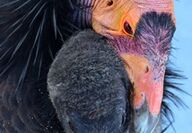
The Arizona Game and Fish Department disagrees with a recent appeal filed by environmental litigants to regulate lead ammunition on the Kaibab National Forest as the solution to lead poisoning in endangered California condors. Three groups that want the U.S. Forest Service to place a mandatory ban on hunting with lead ammunition in northern Arizona lost their original lawsuit against the Kaibab National Forest filed in 2012. Game and Fish intervened in the original lawsuit by the Sierra Club,... Full story

The Southwest Condor Workgroup - a cooperative venture between wildlife conservation and public land management agencies - optimistically reports that a California condor may have hatched in the wild in Utah for the first time since the endangered species was released in Vermilion Cliffs National Monument in northern Arizona in 1996. Biologists are waiting to visually confirm the chick's existence before the milestone becomes official, but recent behaviors by the adult pair are encouraging. "It... Full story

The National Park Service and Utah Division of Wildlife Resources (UDWR) have recently detected additional adult quagga mussels in Lake Powell. Since this time last year, the water levels at Lake Powell have dropped which has exposed shorelines that were previously underwater. Thousands of adult quagga mussels have been found in various locations, such as canyon walls, Glen Canyon Dam, boats, and other underwater structures. The majority of mussels found are isolated adults, with additional... Full story
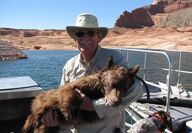
On Friday, Sept. 27, 2013 a bear cub showed up on the shoreline of Lake Powell. Visitors in Face Canyon were certainly surprised to see the little guy and even more amazed that he seemed right at home walking up the ramps of the houseboats parked there. He was looking for food as he was obviously very hungry after a long walk from wherever he came from. Food was offered. The bear seemed to like fish and table scraps. But children, dogs and bears are not compatible. The bear visitation was... Full story
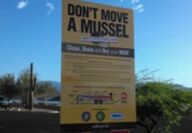
You might have seen the “Don’t Move a Mussel” signs that have been at some statewide lakes. Now the Arizona Game & Fish Aquatic Invasive Species Program will be providing quagga mussel educational opportunities at Lake Pleasant, Bartlett Lake and Lake Havasu throughout the summer. In an effort to reduce the spread and introduction of this serious invasive species, the outreach efforts will encourage boaters to clean, drain and dry their boats. Remaining Sessions Following is a rundown of remai... Full story

Hunters in Arizona continue to prove to the critics that voluntary efforts to conserve endangered wildlife do work, often better than mandated measures. In the last five years, 80 to 90 percent of hunters in Arizona’s condor range have taken measures to reduce the amount of spent lead ammunition that is available to California condors. Arizona’s voluntary lead-reduction program has been well supported by hunters, and they deserve a thank you for continuing sportsmens’ proud tradition of being th... Full story
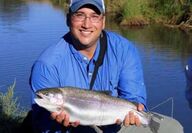
Even though each night is two minutes longer, the nighttime temperatures still remain in the upper 70s and 80s, so our larger desert impoundments are experiencing a slow cool down this season so far. However, in the high country the nights are into the 50s or cooler, so the transition to fall conditions will be more pronounced and the fish should be getting increasingly active. Transition Time This is really a transition time of year from summer to autumn conditions. As the water cools, the... Full story
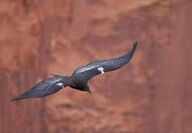
Three 2012 Chicks Bring Total Condors To 77 Third wild-hatched California condor chick confirmed in Arizona-Utah population GRAND CANYON, Ariz. — A biologist from the Peregrine Fund was finally able to obtain visual confirmation of a wild-hatched California condor chick that had been suspected, but not seen, in a nest cave deep in Grand Canyon National Park. This confirmed sighting brings the total number of wild condor chicks produced by the Arizona-Utah flock this season to three. “Based on... Full story
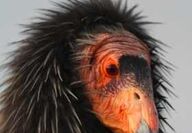
Endangered California Condors Celebrate 15th Anniversary PHOENIX — The endangered California condor population that now spans Arizona and Utah is celebrating a significant milestone this month: the 15th anniversary of the first release of the birds into Arizona after being gone from the area for nearly 100 years. In December 1996, six condors were released from an acclimation pen atop the Vermilion Cliffs in northern Arizona. Today, the population consists of more than 70 birds that now also u... Full story